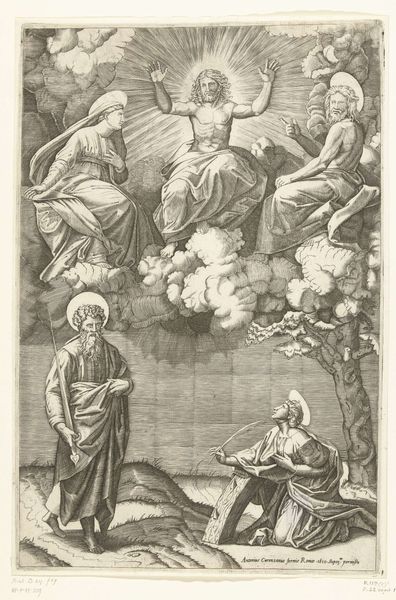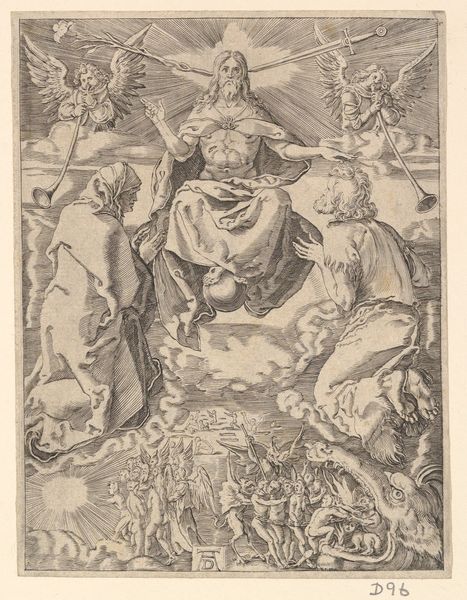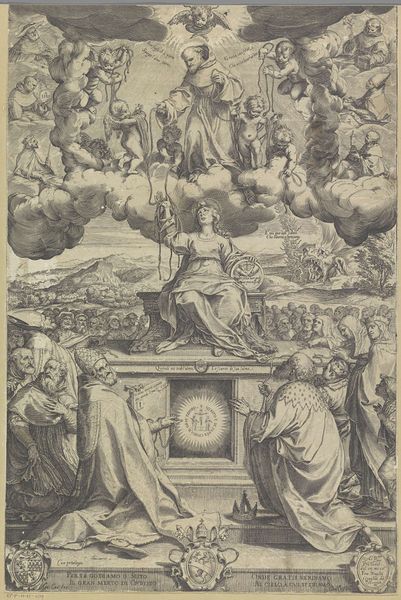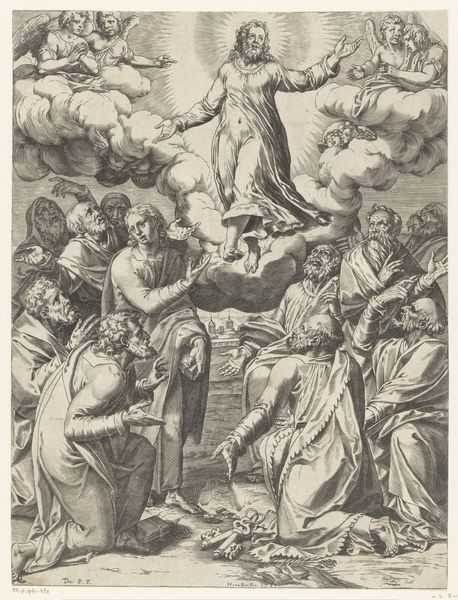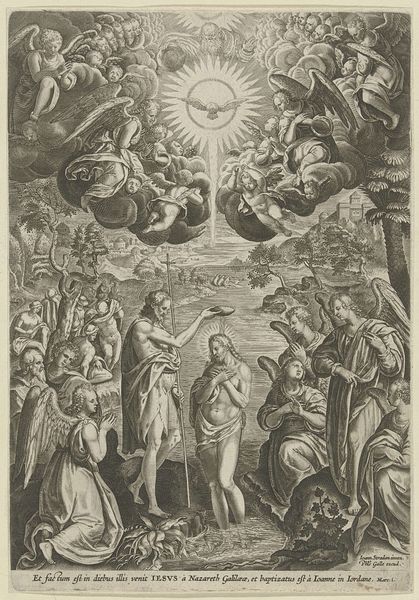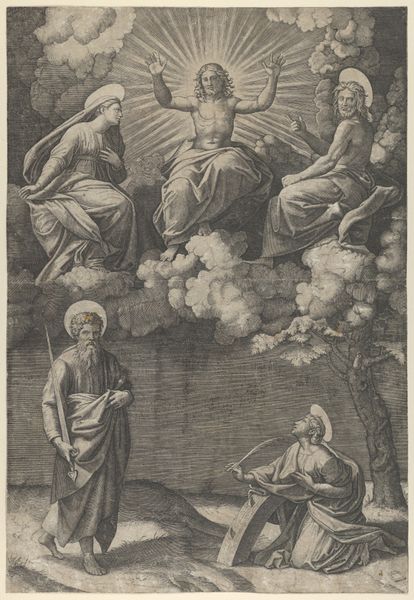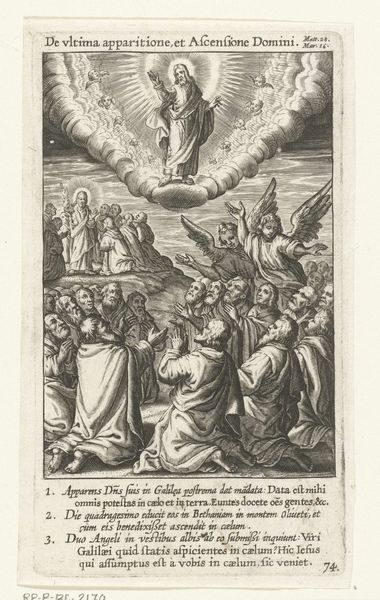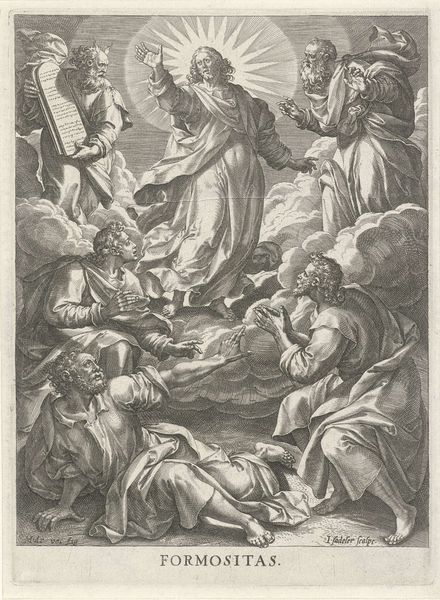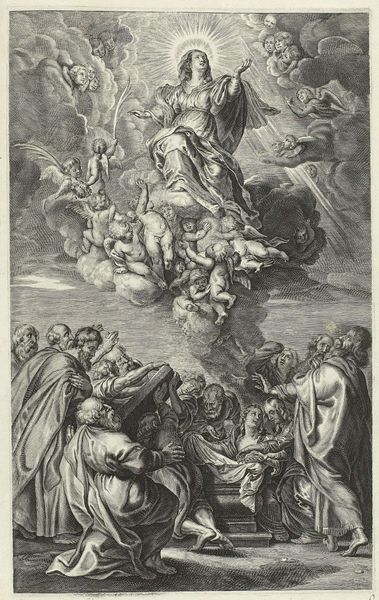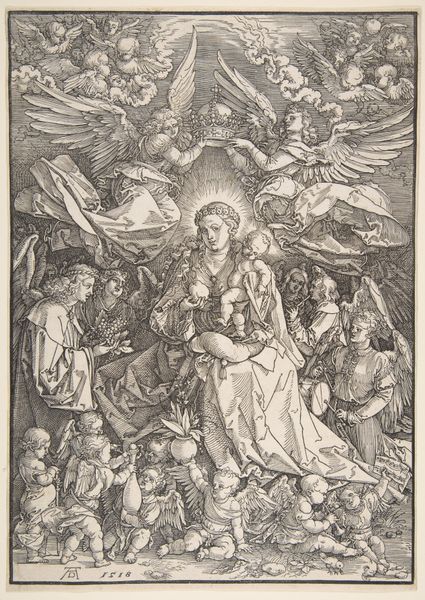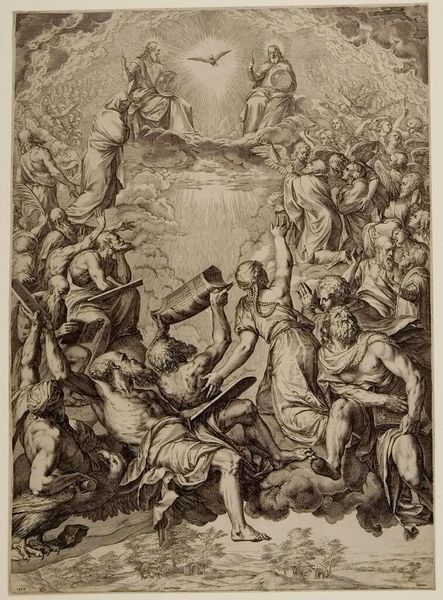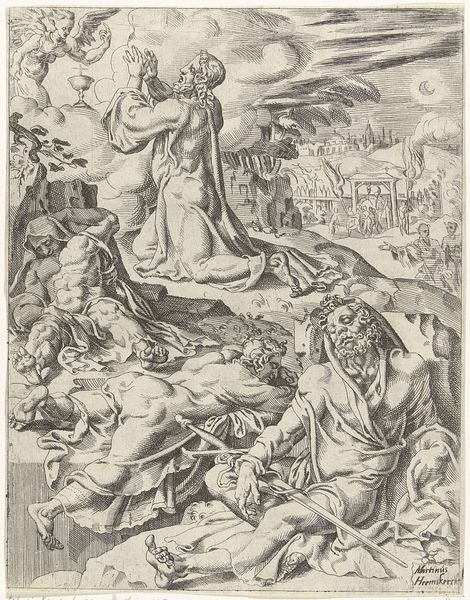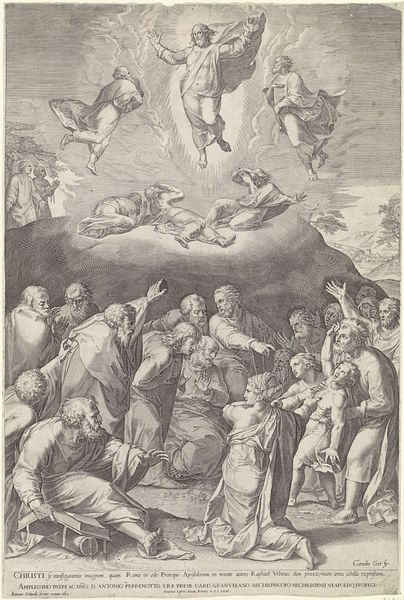
Dimensions: height 531 mm, width 321 mm
Copyright: Rijks Museum: Open Domain
Editor: So this is Cornelis Cort’s "Twist tussen de kerkvaders over het heilig sacrament" from 1575, currently held at the Rijksmuseum. It's a print, an engraving… Looking at the composition, it feels very staged, almost theatrical, with the figures arranged in distinct tiers. What's your take on this? Curator: It is theatrical! Cort created this engraving during a period of intense religious upheaval. Consider the socio-political climate: the Reformation was still raging, and the Catholic Church was desperately trying to maintain its authority. This print needs to be understood as part of that effort. Editor: How so? Curator: Notice the arrangement: heavenly figures above, the Church Fathers debating below. It's not just a visual hierarchy; it’s a representation of divinely sanctioned authority. The "twist," the debate, is happening specifically amongst the Church Fathers while the Godhead observes. What impact do you think a composition like this would have on its audience? Editor: I suppose it presents the Church's teachings as something not up for debate by the common person, right? That makes the setting and grouping make a lot of sense! Were images like these widely circulated? Curator: Absolutely. Prints were a powerful propaganda tool. Images like this, commissioned and distributed by the Church, served to visually reinforce dogma and suppress dissent. What do you make of the chalice itself at the center of this work? Editor: The chalice…It's quite small and presented on a platform. I now understand this work's role in upholding Church doctrine. I didn't think about the Reformation at all at first, I only looked at the aesthetics. Curator: Exactly. And remember, the way we view art today, in museums and galleries, shapes our understanding. Art of the past often served very different purposes than aesthetic enjoyment. Editor: This changes my perception of the piece entirely. It’s not just a historical depiction but a carefully constructed argument! Curator: Precisely. And that's why understanding the social and political context is crucial to truly interpreting works like this.
Comments
No comments
Be the first to comment and join the conversation on the ultimate creative platform.
